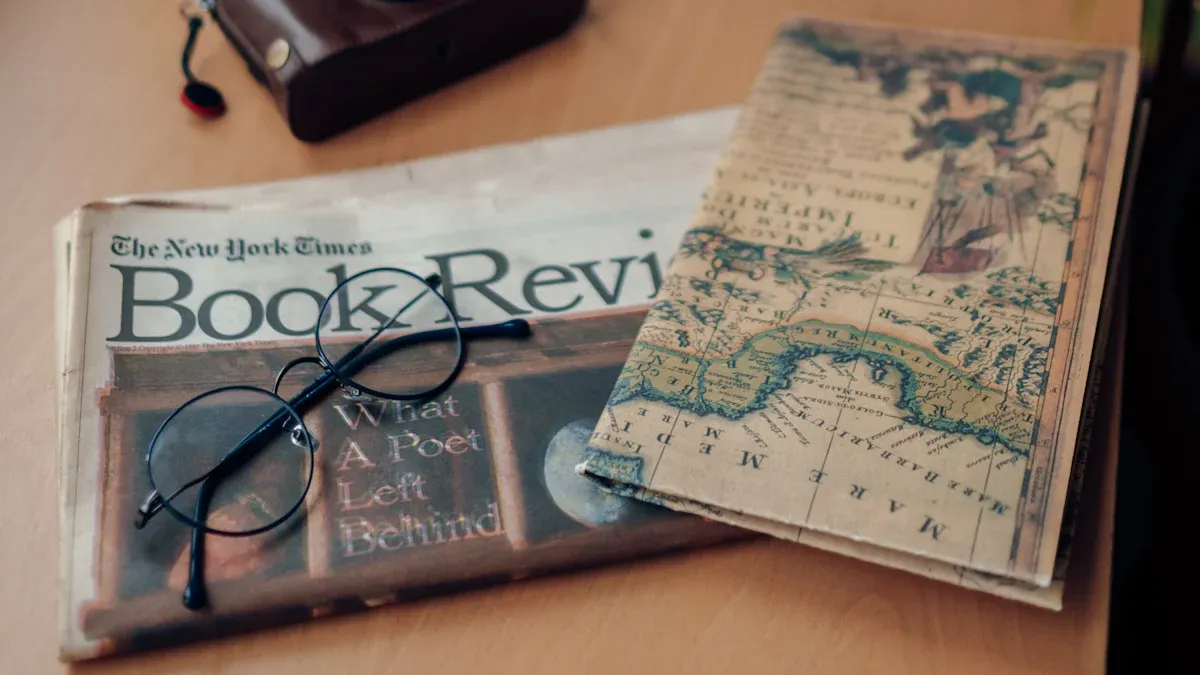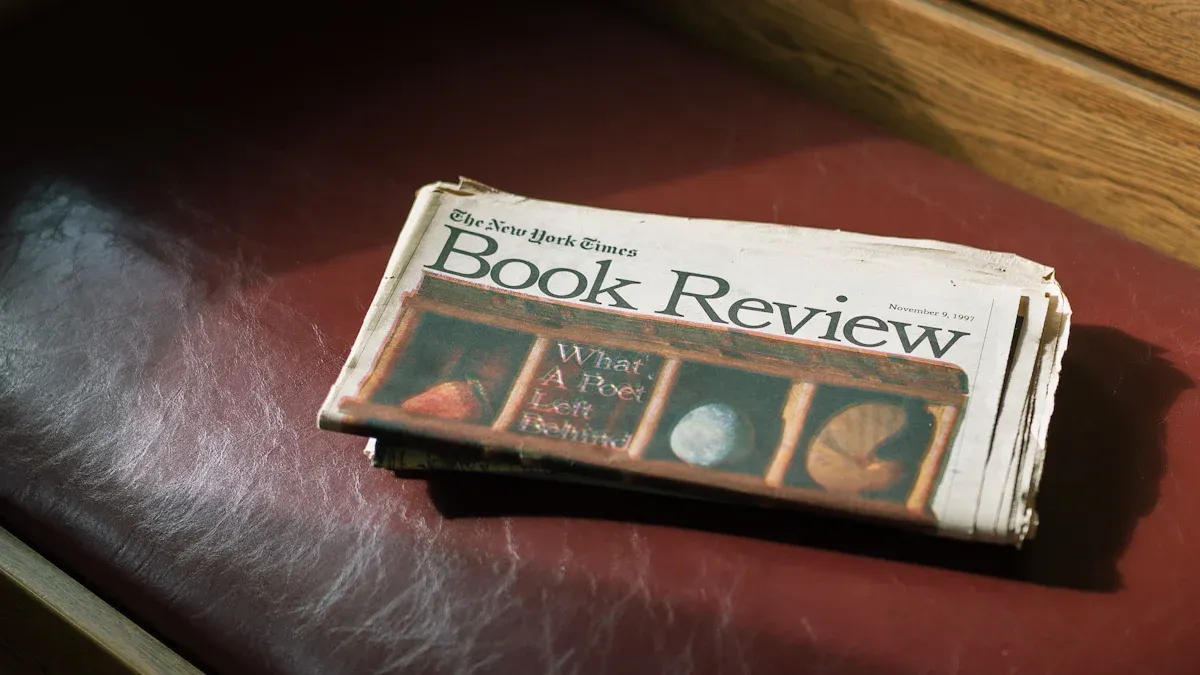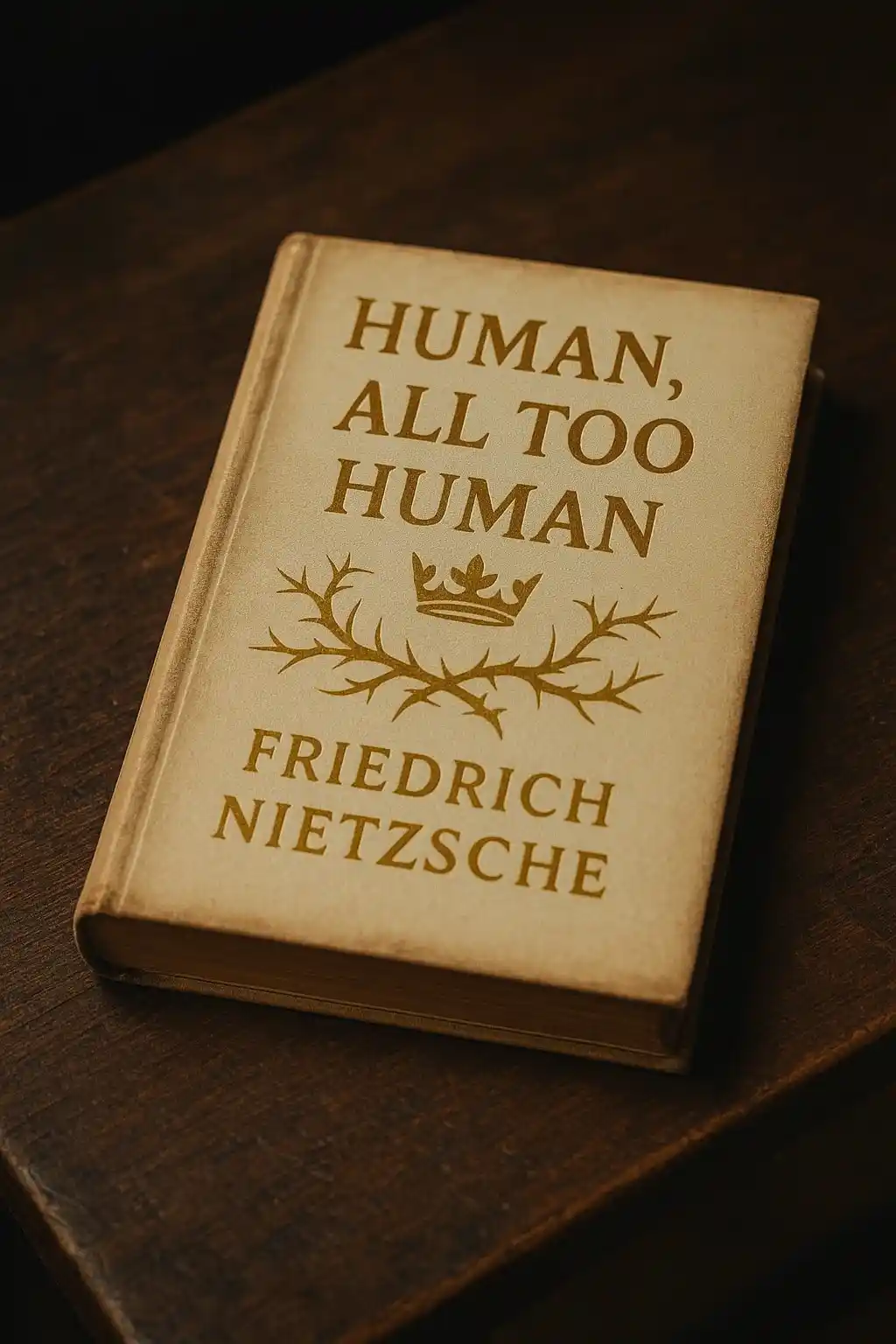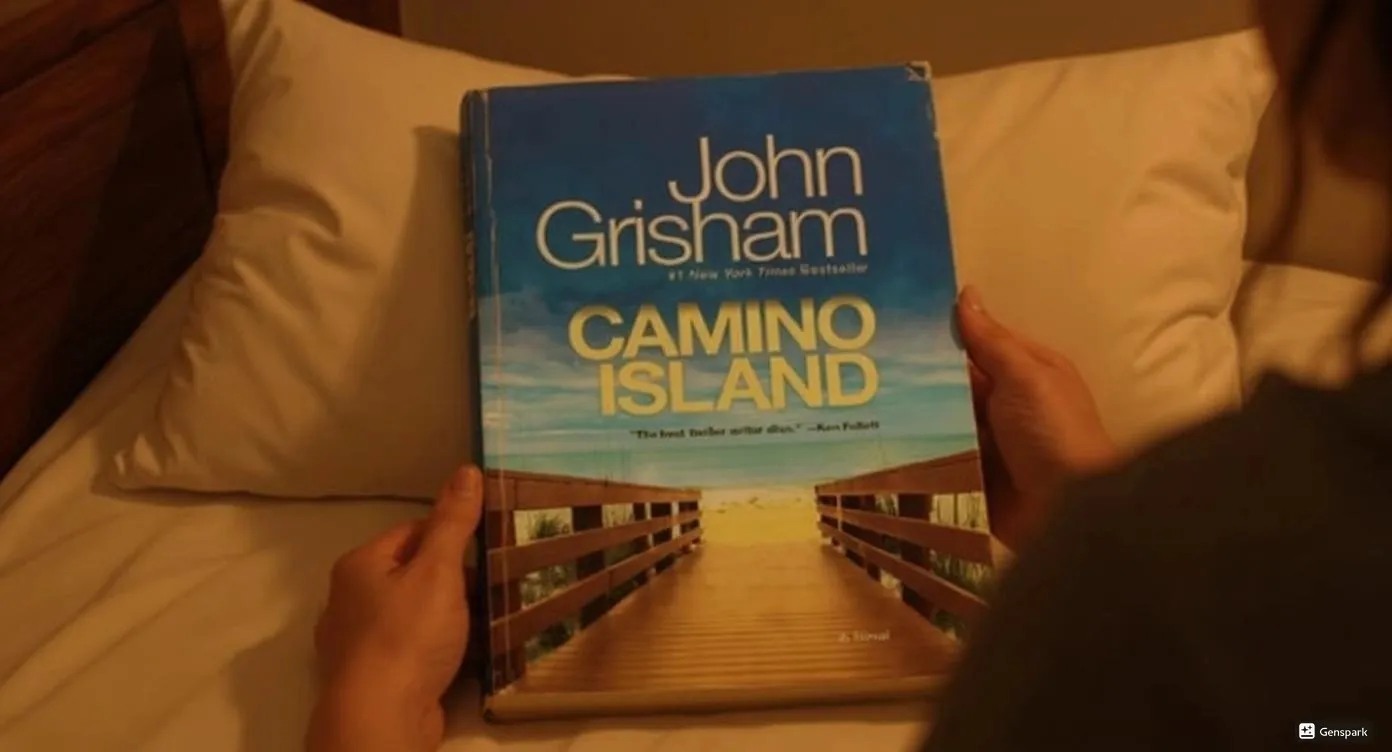I chose The Stolen Life of Colette Marceau by Kristin Harmel because I love a Paris mystery set in WWII. This book has scary jewel thieves, secrets, and a fast chase for justice. Kristin Harmel is known for exciting stories, and she did not let me down.
Key Takeaways
The book is an exciting WWII mystery set in Paris. The main character is Colette, who is strong and brave.
The story has suspense and deep feelings. It also shows real facts about Paris during the Nazi time.
The book talks about resistance and survival. It also shows hard choices and finding forgiveness.
The story uses two timelines to keep readers interested. It slowly shares big secrets.
The book moves quickly but is not rushed. The chapters are short and the words are clear. This makes it easy to read.
The story talks about hard things like violence and sadness. It also shows trauma, so it is best for readers who can handle serious topics. Other characters help make the story deeper. But the main focus is on Colette’s growth and problems.
Verdict
Who Should Read
Kristin Harmel really knows how to grab your attention. If you like historical fiction, you will enjoy this book. The story takes place in WWII Paris. It pulls you in right away. I stayed up late reading, feeling excited as Colette ran through dark streets. She faces jewel thieves and danger. The Stolen Life of Colette Marceau by Kristin Harmel mixes suspense, mystery, and feelings in a new way.
Here’s who will get the most out of this novel:
Fans of WWII fiction: The Paris setting and Resistance story bring lots of tension.
Mystery lovers: The murder case and missing bracelet are full of surprises.
Readers who crave emotional journeys: Colette’s sadness and fight for justice are powerful.
Anyone who enjoys strong female leads: Colette is brave and real, and you will remember her.
Content Warnings
The Stolen Life of Colette Marceau by Kristin Harmel shows the dark side of Nazi-occupied Paris. Here is what you should know before you start:
Content Area | Details |
|---|---|
Trauma | Grief, loss, and hard feelings are a big part of the story. |
Crime | The story has jewel theft, black market deals, and betrayal. |
Plot Summary

Setting: 1940s Paris
Paris in the 1940s feels like a character itself in this story. I could almost hear the echo of boots on cobblestone and smell the fear in the air. The city sits under Nazi occupation, and every street corner hides a secret. The book captures the tension and danger of this time. People whisper about the Resistance. Some hide, some fight, and some betray.
The history of Paris during WWII shapes every moment. I learned that the city’s memory of war, resistance, and survival still lingers today. The author paints a picture of a city where hope and fear walk side by side.
Paris in this novel is not just a backdrop—it’s a living, breathing force that shapes every choice Colette makes.
Jewel Thieves and the Bracelet
Now, let’s talk about the jewel thieves. I love a good heist, and this book delivers. The thieves in The Stolen Life of Colette Marceau by Kristin Harmel are not just after riches. They have their own code of honor, and sometimes, they even help the Resistance.
The missing bracelet is more than a pretty trinket. It holds secrets, and everyone wants it. The bracelet changes hands, gets stolen, and even hides a dangerous powder. Every time it appears, the tension spikes. I found myself holding my breath, waiting to see who would end up with it next.
The bracelet is a symbol of loss, hope, and betrayal.
The thieves use clever tricks, disguises, and even sabotage.
The chase for the bracelet ties all the characters together.
Murder Mystery
The murder mystery in this book had me guessing until the end. Colette’s sister is killed, and Colette will not rest until she finds the truth. The story moves between two timelines, which kept me on my toes. Each clue felt like a piece of a puzzle. The Resistance, the thieves, and the bracelet all connect to the murder. I loved how the author mixed suspense with emotion. I felt Colette’s grief and her drive for justice.
The murder mystery is full of twists and red herrings.
Colette’s quest for answers leads her into danger.
The story uses clues, secrets, and betrayals to keep the reader hooked.
I couldn’t put it down. The mix of suspense and heart made this one of the most chilling mysteries I’ve read this year.
Themes
Resistance and Survival
When I read about Colette sneaking through Paris, I felt my heart race. The book dives deep into what it means to resist when everything feels hopeless. Colette and her allies risk their lives, not just for themselves, but for something bigger. I saw how survival isn’t just about staying alive. It’s about holding onto your beliefs, your family, and your sense of self—even when the world tries to take them away.
Paris under Nazi occupation becomes a test of courage and cleverness. Every shadow hides a threat, but also a chance to fight back.
I noticed the story lines up with real history and other books I’ve read. Many novels and studies show how people survive by holding onto culture, family, and hope. Here’s a quick look at how experts describe these themes:
The bracelet in the story becomes a symbol of this fight. It’s not just a piece of jewelry—it’s a reminder of what Colette and her sister have lost, and what they still hope to save.
Moral Choices
I kept asking myself, “What would I do in Colette’s place?” The book doesn’t make it easy. Every choice feels heavy. Sometimes, doing the right thing means breaking the law or betraying a friend. Other times, it means risking everything for someone you love.
Moral choices are messy. The story shows how people’s actions depend on their situation, not just their values.
Group loyalty matters. What feels right for one person might seem wrong to another, especially when survival is on the line.
No easy answers. The book reminds me that real life is full of gray areas, not just black and white.
Psychologists and philosophers agree—moral decisions get complicated fast. People want to be good, but fear, loyalty, and pressure can twist their choices. I saw this play out in every chapter.
Identity and Redemption
Colette’s journey is about more than solving a murder. She’s trying to figure out who she is after everything falls apart. I felt her struggle to forgive herself and find hope again. The story uses the lost bracelet as a symbol for lost identity and the chance to start over.
Redemption feels earned. Colette’s path from grief to hope made me root for her.
Friendship and family matter. The people around Colette help her see herself in a new light.
Change is possible. Even after terrible mistakes, the book shows that people can grow and heal.
Research backs this up. Stories of redemption often move from sadness to hope, and people who find meaning in their struggles tend to feel better about themselves and their lives. I saw this in Colette’s story—her journey left me thinking about my own choices and what it means to start fresh.
Characters

Colette Marceau
Colette Marceau feels like a real person from the start. I wanted her to win, even when she messed up. She is not perfect, and that makes her interesting. The author gives her bravery, stubbornness, and strong loyalty. I think Kristin Harmel picked these traits for a reason. They make Colette easy to understand and hard to guess.
Growth
It was exciting to see Colette change in the story. At first, she is sad and feels guilty. As the story goes on, she learns to trust herself and others. Her journey is not easy. She makes mistakes, feels unsure, and sometimes gets angry. Each problem helps her become stronger. I liked how her search for her sister’s killer made her face her fears. By the end, Colette’s bravery feels real because she worked for it.
Here is how I see her character arc, based on what I think makes a good main character:
Personality traits: She is brave, loyal, and sometimes acts without thinking. These traits keep the story moving.
Role in the story: She is the main part of the book and causes every big event.
Morals and ethics: Colette has a hard time choosing right from wrong, which makes her choices feel real.
Motivations: She loves her sister and wants justice, so she keeps going.
Relationships: Her friends and enemies change how she acts.
Colette’s changes surprised me. She goes from a sad sister to someone who fights for justice.
Flaws
Every hero has flaws, and Colette has many. She acts too quickly and lets her feelings get her into trouble. Sometimes she trusts people she should not or pushes away those who care. These flaws make her seem real. I got annoyed with her, but I still cared about her. The author uses her mistakes to keep the story tense and believable.
Supporting Cast
The other characters in The Stolen Life of Colette Marceau by Kristin Harmel make the story deeper. Some are friends, some are enemies, and some are in between. Their actions with Colette show new parts of her and help the story move forward.
Allies
Trusted friends: Colette’s best friends stay with her, even when things get hard. Their loyalty helps her.
Mentors and helpers: Some older people give advice and help Colette see more clearly.
Resistance members: These people bring hope and show what it means to fight back.
I saw that strong friendships make stories better. Like Sherlock and Watson or Andy and Red, Colette’s friends help her grow and be brave. Their help feels real, not fake.
Antagonists
Jewel thieves: Some are nice, some are mean. They make things hard for Colette.
Traitors and informers: These people add mystery and make me wonder who to trust.
Nazi officers: They are very dangerous and make the story more serious.
Too many small characters can confuse readers. I sometimes felt lost when new people showed up and left quickly. Here is a table that shows what worked and what did not:
Aspect Evaluated | Critique Summary |
|---|---|
Character Backgrounds | Some need more details to feel real. |
Number of Minor Characters | There are a few too many, which can make things confusing. |
Character Descriptions | Easier descriptions would help the story move faster. |
Narrative Pacing | Short scenes with new characters slow down the story sometimes. |
Suggested Improvement | Focus more on Colette and her close friends for a better story. |
The best side characters have clear reasons for what they do and real ties to the hero. When this happens, the story is great.
Structure
Dual Timelines
I have a soft spot for books that jump between timelines. Sometimes, though, I get lost if the author isn’t careful. In this story, the dual timelines actually made the mystery more exciting. I found myself flipping back and forth, trying to piece together clues from the past and present.
The chapters switch between Colette’s desperate search in Nazi-occupied Paris and moments from before the tragedy. Each timeline gives just enough information to keep me guessing, but never so much that I felt overwhelmed.
What I liked most? The transitions felt smooth. I never had to reread a page to figure out where—or when—I was. The author uses clear markers at the start of each chapter, so I always knew which part of Colette’s journey I was following.
This structure made the story feel like a puzzle, and I love a good puzzle. It also helped me connect with Colette’s grief and determination, since I could see how her past shaped her choices in the present.
If you enjoy stories that slowly reveal secrets, you’ll probably appreciate how these timelines work together. It’s like watching two movies at once, and waiting for that moment when everything clicks.
Key strengths of the dual timeline structure:
Keeps suspense high by revealing clues bit by bit
Deepens emotional impact as we see Colette’s memories and motivations
Helps the reader stay engaged with short, focused chapters
Pacing and Style
I’ll admit, I sometimes read so fast I miss details. With this book, the pacing kept me on my toes. The story moves quickly, but not so fast that I felt rushed. Short chapters, snappy dialogue, and lots of action scenes made it easy to keep turning pages. I finished the book in two late-night sittings—my eyes were tired, but I couldn’t stop.
Stylistics experts say that things like sentence length, rhythm, and syntax shape how we experience a story. I noticed the author uses a mix of short, punchy sentences during tense moments and longer, more thoughtful ones when Colette reflects on her past. This variety made the action feel urgent and the emotional scenes more powerful. Academic reviews often point out that good pacing isn’t just about speed—it’s about knowing when to slow down and let the reader breathe. I saw that here.
Katie Wales and Peter Barry both say that stylistics links the way a story is told to how it makes us feel. I felt that connection in every chapter.
What stood out to me about the pacing and style:
Short chapters kept the story moving
Sentence variety matched the mood—fast for action, slower for emotion
Clear, direct language made even complex ideas easy to follow
If you like books that balance suspense with heart, you’ll probably enjoy the way this one is written. I know I did.
Emotional Impact
Key Moments
I have to admit, this book hit me right in the feels more than once. Some scenes made my heart race, while others left me staring at the ceiling, thinking about Colette’s choices. The author knows how to pull readers into the story with emotional storytelling. I learned that when a story tugs at your heart, your brain actually lights up in ways that make you care more about the characters. That’s not just my opinion—science backs it up! Here’s what happens when a book gets emotional:
Emotional stories activate empathy and emotional investment in the brain.
Dopamine and oxytocin help you remember the story and feel connected to the characters.
Strong feelings make you care more about what happens next.
Stories with emotion stick with you longer than just facts or information.
Some moments in this novel really stood out for me:
Colette’s first discovery of her sister’s secret—I felt the shock right along with her.
The chase through the Paris streets—my pulse actually sped up.
The scene where Colette faces her greatest fear—I had to put the book down for a second and breathe.
The final confrontation—I found myself whispering, “Don’t do it!” even though I knew she had to.
I noticed that when a book writes directly to its audience, like this one does, it brings out more joy and less sadness. That’s probably why I felt so invested in Colette’s journey. The emotional ups and downs made the story unforgettable.
Grief and Hope
This story doesn’t shy away from the hard stuff. Colette’s grief feels raw and real. I saw her struggle with pain, guilt, and loneliness. Sometimes, I wanted to reach into the pages and give her a hug. Grief research shows that losing someone can turn your world upside down. It brings shock, anger, and even depression. I saw all of that in Colette’s journey.
But here’s the thing—hope sneaks in, even when things look darkest. Hope theory says that looking to the future and setting new goals can help people heal. Colette finds small reasons to keep going, even when she wants to give up. She starts to believe that life can get better, one step at a time.
Here’s a quick look at what the experts say about grief and hope:
Aspect | Grief Research Highlights | Hope Theory Insights |
|---|---|---|
Emotional Impact | Grief brings pain, anger, guilt, and loneliness. | Hope helps people look forward and feel less stuck. |
Coping Process | Grief interrupts life and makes it hard to move on. | Hope gives motivation and helps people plan for better days. |
Adaptation | Some people withdraw, others keep busy. Finding new meaning is key. | Hope helps people set goals and find ways to reach them, even after loss. |
Comparison
Kristin Harmel’s Other Novels
I have to admit something. I read a lot of Kristin Harmel’s books. I read them on planes, in waiting rooms, and even while standing in line. Her stories always grab my attention. Each book feels different, though. If you have read The Book of Lost Names or The Winemaker’s Wife, you will see some things that are the same in this new story. But there are also new surprises.
What makes this book special?
Kristin Harmel likes to write about women making tough choices in WWII. She often uses two timelines, secrets from the past, and strong settings. I see these things in The Book of Lost Names and The Forest of Vanishing Stars too. But this time, the jewel thieves and murder mystery make it feel new. The chase scenes made my heart beat faster.
Here is what I noticed:
Recurring themes:
Survival, identity, and looking for redemption are in most of her books.
Female friendship and family are very important.
There are tough choices and no easy answers.
Structure and style:
She loves using two timelines. This helps build suspense and reveal secrets slowly.
Her writing is clear and simple, so the emotional parts feel stronger.
What’s new in this novel:
The jewel thieves and missing bracelet make the story feel like a movie.
The murder mystery was harder to solve than in her other books.
Paris feels so real, almost like it is a person.
I have read many of this author’s books. This one feels both the same and different. It is like seeing an old friend do something wild and new.
People who study books say that comparing stories can change how we see them. Experts like R. Radhakrishnan say comparison is not just about finding what is the same. It is about making choices that help us understand stories better. I think this is true for Harmel’s books.
When I read them together, I see how she changes her stories to keep them interesting. Books like Comparative Textual Media say that reading stories in different ways can help us enjoy them more. Harmel writes print books, but her stories are deep and good for comparing.
The Stolen Life of Colette Marceau by Kristin Harmel: Final Thoughts
Audience
I have to confess, I read this book in one sitting—curled up on my couch with a mug of tea, ignoring my phone and the world outside. Sometimes, I get so lost in a story that I forget to eat dinner. If you know that feeling, you’re probably the right reader for this novel.
So, who should pick up The Stolen Life of Colette Marceau by Kristin Harmel? I think this book works best for readers who want more than just a history lesson. If you love stories that mix suspense, emotion, and a dash of danger, you’ll feel right at home. I’d hand this book to:
Fans of WWII fiction who want a fresh take with a strong female lead.
Mystery lovers who enjoy a twisty plot and a puzzle to solve.
Readers who crave emotional journeys—if you like books that make you feel something, this one delivers.
Book clubs looking for a story with big themes and lots to discuss.
Sip The Unknown—Discover Stories You Never Knew You’d Love!
Dionysus Reviews Has A Book For Every Mood
Biography & Memoir
Fiction
Mystery & Detective
Nonfiction
Philosophy
Psychology
Romance
Science Fiction & Fantasy
Teens & Young Adult
Thriller & Suspense
Frequently Asked Questions
Is this book based on real events?
I wondered the same thing! While the story uses real WWII Paris as a backdrop, the characters and the jewel thief plot come from the author’s imagination. Some Resistance details feel true to history, though.
Do I need to read Kristin Harmel’s other books first?
Nope! You can jump right in. If you’ve read her other novels, you might spot familiar themes, but this story stands alone. I started with this one and didn’t feel lost at all.
How graphic is the violence?
I found the violence tense but not overly graphic. The author focuses more on suspense and emotion than on gory details. If you’re sensitive, you might want to skim a few scenes, but nothing felt gratuitous.
Is there romance in the story?
There’s a hint of romance, but it never takes over. The focus stays on Colette’s journey, her grief, and her search for justice. I liked that the love story felt realistic and didn’t distract from the main plot.
Would this book work for a book club?
Absolutely! My book club friends love stories with big themes and lots to discuss. You’ll find plenty here—moral choices, survival, and redemption. I’d suggest it for any group that enjoys historical fiction with a twist.
How long did it take you to read?
I read it in two sittings—one late night and one lazy Sunday morning. The short chapters and fast pace made it easy to keep going. If you’re a binge reader like me, you might finish even faster!
Is the ending satisfying?
For me, yes. The mystery wraps up with a few surprises, and Colette’s journey feels complete. I closed the book feeling both sad and hopeful—a rare combo that I always appreciate.
Can teens read this book?
I’d say yes for older teens, especially those who like history and suspense. The themes are mature, but nothing felt inappropriate. If you’re a parent, maybe skim it first to be sure.









